Kristine Hughes's Blog, page 168
November 25, 2010
Thanksgiving in London
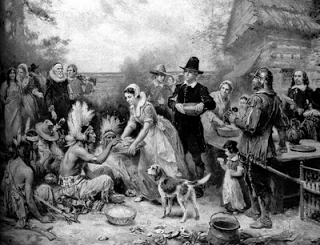
When you think about it, it's amazing that celebrating the Thanksgiving holiday in England took so long to catch on. After all, the pilgrims were English. Nowadays, many venues in the City are serving Thanksgiving dinner with all the trimmings. The Reading Room at Claridge's and the Hard Rock Cafe in Old Park Lane (in the building that used to house Coutts Bank) are just two London restaurants that traditionally put on Thanksgiving menus. Here are a few others:
Babylon at the Roof Gardens (Kensington) - Overlooking the spectacular London skyline 100ft above Kensington High Street, diners at Babylon on Thanksgiving night (Thursday 26th November) can enjoy an evening of live American jazz whilst dining on a selection of sumptuous, seasonal dishes from the mouth-watering menu, with one or two extra special Thanksgiving themed dishes on offer. The talented vocalists and musicians from resident jazz band 'The Ben Matthews Trio' will be performing world-famous tracks from The Great American Song Book for an authentic and celebratory evening. From Cole Porter classics including 'I Get a Kick Out of You' to Harold Arlen's 'Stormy Weather' and Rodgers and Hart's 'My Funny Valentine,' Babylon diners will be transported to the smoky basement New York jazz clubs of the 1930s and 40s.
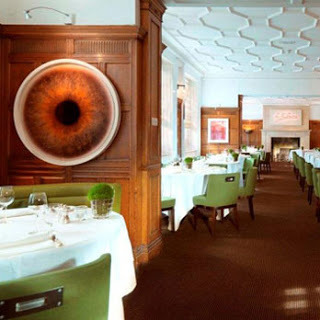
HIX at the Albemarle at Browns Hotel
HIX at the Albemarle at Browns Hotel - A delicious three course Thanksgiving Day menu celebrates the day with roast turkey with creamed sweetcorn and caramelised sweet potato and cranberry sauce.
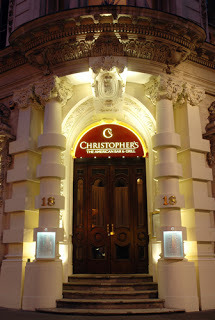
Christopher's American Bar and Grill - (Covent Garden) - Christopher's can be found in an elegant Grade II listed Victorian Building located in the heart of theatre land. The original Victorian features and high ceilings of the dining room also enjoys spectacular views of Waterloo Bridge and serves traditional and contemporary dishes from across the U.S.A.
Missouri Angel - (Tower) - Missouri Angel first opened its doors on Thanksgiving Day in 2007 in what was formerly the Angel Pub. Not in the mood for turkey? Try an aged ribeye steak carved from good old Nebraska beef. And don't forget to order the pecan maple tart with vanilla ice cream and maple syrup for dessert, er, pudding. You can view the Thanksgiving Menu here.
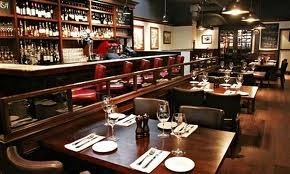
Goodman
Goodman Mayfair - (Oxford Circus) - A good, ole Yankee steakhouse, Goodman prides itself on prime beef from grain-fed herds that are matured in a dry aging room on the premises. At Thanksgiving, Goodman offers roast Holy Farm turkey with creamed sweetcorn, caramelised sweet potato and cranberry sauce.
This Thanksgiving, Vicky and I are grateful for all of you. Our Visitor Map shows that we've been consistently averaging well over 250 hits a day and have had over 15,000 visitors since we began posting in April. The blog has loyal followers located all over the world, including the UK, Germany, India, Australia, Iceland, Thailand, Israel and Greece, to name but a few. Therefore, no matter where you live, we want to wish each of you a Happy Thanksgiving and offer you our personal thanks for your interest in Number One London.
Thank you!
Published on November 25, 2010 01:25
November 24, 2010
JASNA in Portland OR, Part Three
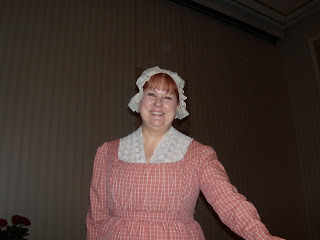 Victoria here, reporting on the final three break-out sessions I attended at the JASNA AGM. Mary Hafner-Laney's (right) topic was "I was tempted by a pretty-colored muslin": Jane Austen and the Art of Being Fashionable. A capacity audience enjoyed her talk about fabrics and fashions of the regency era, the dresmakers and home-sewers, period patterns and costs.
Victoria here, reporting on the final three break-out sessions I attended at the JASNA AGM. Mary Hafner-Laney's (right) topic was "I was tempted by a pretty-colored muslin": Jane Austen and the Art of Being Fashionable. A capacity audience enjoyed her talk about fabrics and fashions of the regency era, the dresmakers and home-sewers, period patterns and costs.
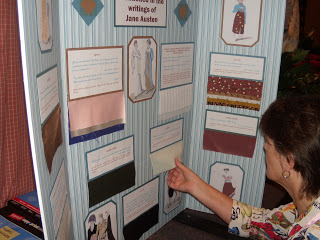 Mary had assembled collections of fabrics and excrpts from a fashion magazine, La Belle Assemblee, and showed her fashion doll, one of the techniques used by dressmakers to suggest styles to their customers. We had rather a mad dash at the conclusion of her talk for the excellent hand-outs she had assembled. Some of us will share ours at the December birthday luncheon.
Mary had assembled collections of fabrics and excrpts from a fashion magazine, La Belle Assemblee, and showed her fashion doll, one of the techniques used by dressmakers to suggest styles to their customers. We had rather a mad dash at the conclusion of her talk for the excellent hand-outs she had assembled. Some of us will share ours at the December birthday luncheon.
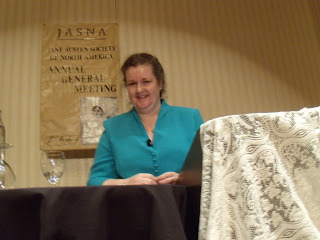
Next, I went to hear Sarah Parry, of the Chawton House Library, whose topic was "This roof was to be the roof of an abbey!": What is Northanger Abbey? Ms. Parry's entertaining talk described a number of stately homes built out of abbeys, some of which Jane Austen certainly saw. The school she attended in Reading was housed in part of a former abbey.
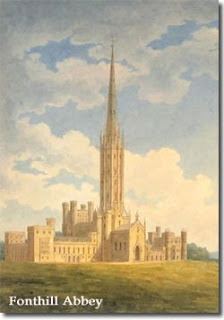 Parry also told the amazing story of Fonthill Abbey, which was not an abbey at all, but a gothic fantasy structure erected by one of those eccentric characters in the period, William Beckford. The tower was 276 feet high and eventually collapsed.
Parry also told the amazing story of Fonthill Abbey, which was not an abbey at all, but a gothic fantasy structure erected by one of those eccentric characters in the period, William Beckford. The tower was 276 feet high and eventually collapsed.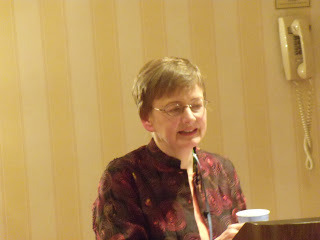 In the final round of break-outs, I attended the always-popular Susan Allen Ford's talk on "Ingenious Torment: Reading Instructive Texts in Northanger Abbey." She told us of the many influences in Jane Austen's novels of various books on proper behavior and advice to young ladies. Austen sometimes parodied the information in these instructive texts, as when Mrs. Morland, upon the abrupt rupture of Catherine's romance with Henry, admonishes her simply to "live and learn."
In the final round of break-outs, I attended the always-popular Susan Allen Ford's talk on "Ingenious Torment: Reading Instructive Texts in Northanger Abbey." She told us of the many influences in Jane Austen's novels of various books on proper behavior and advice to young ladies. Austen sometimes parodied the information in these instructive texts, as when Mrs. Morland, upon the abrupt rupture of Catherine's romance with Henry, admonishes her simply to "live and learn."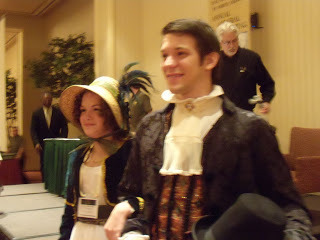 I can add some information to a previous post on Team Tilney. I found a report on Austenblog from one of the participants, with lots more information, including the identity of Henry Tilney and the text of some of the presentation.Click here to read and enjoy.
I can add some information to a previous post on Team Tilney. I found a report on Austenblog from one of the participants, with lots more information, including the identity of Henry Tilney and the text of some of the presentation.Click here to read and enjoy.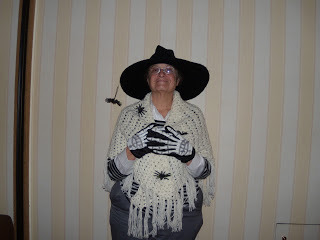 During the Evening's Bal Masque, several interesting speakers gave talks that tempted many of us away from the dancing. Elsie Holzworth of the Chicago chapter spoke about the connections between Jane Austen and Edgar Allen Poe. Who knew?
During the Evening's Bal Masque, several interesting speakers gave talks that tempted many of us away from the dancing. Elsie Holzworth of the Chicago chapter spoke about the connections between Jane Austen and Edgar Allen Poe. Who knew? But it is undeniable that their paths might have crossed while Edgar lived in London as a lad. Jane Austen's relatives lived near Poe's home and the children might well have played together in the park. As so often with the details of Jane Austen's life, we cannot be entirely sure, but the possibility is intriguing -- little Edgar, perhaps listening to Jane reading a story to her nephews ... or engaging in a lively game of baseball, as Catherine Morland was said to have done in Northanger Abbey.

My regret at this AGM (as at all the others) is that I couldn't listen to more of the presentations. For each of the five break-out sessions, there were six or seven speakers, any of which I would have loved to hear. Now, I have next year to look forward to, in Fort Worth, TX, October 13-16, 2011, celebrating 200 years of Sense and Sensibility .
For more informations, click here.
Published on November 24, 2010 02:22
November 23, 2010
The Death of Elizabeth, 5th Duchess of Rutland
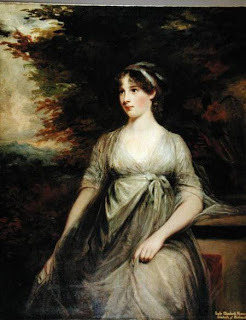 John Hoppner - Lady Elizabeth Howard, Duchess of Rutland
John Hoppner - Lady Elizabeth Howard, Duchess of Rutland From The Gentleman's Magazine, December 1825
Duchess Of Rutland. Nov. 23. At Belvoir Cattle, in consequence of an inflammation of the chest, aged 45, Elizabeth Duchess of Rutland. Her Grace so lately as Friday the 18th was engaged in inspecting the progress of the numerous workmen employed in completing the splendid decorations of the grand drawing-room at Belvoir, which it was intended should have been first opened on the occasion of the Duke's approaching birth-day: she also took her accustomed exercise, and wrote several letters. In the evening symptoms of the disease, with which she was severely attacked a year ago, began to manifest themselves; but on the following day they appeared to have abated very considerably. At two o'clock on Sunday morning, Mr. Catlett, surgeon to the family, who sleeps in the castle, was hastily summoned to her Grace's apartment, and found her state so extremely dangerous as to excite the most alarming appreheusions. Expresses were instantly sent off to Dr. Wilson, of Grantham, Dr. Pennington, of Nottingham, Dr. Arnold, of Leicester, and Sir Henry Halford. The three first promptly obeyed the summons; Sir Henry arrived at the castle from London at 5 o'clock on Tuesday morning, but the hand of death was already on the Duchess; all the efforts of the faculty had been unremittingly exerted to arrest the progress of the disorder, but in vain. Her Grace, whose self-possession was remarkable, felt perfectly alive to the imminence of her danger, and the fortitude with which she bore her acute sufferings, and viewed her approaching fate, was in the highest degree affecting. The Duke never quitted the bed-side till she had ceased to breathe. Dispatches were immediately forwarded, announcing the afflicting event, to his Majesty, to his Royal Highness the Duke of York, and to the various branches of the Rutland and Carlisle families.
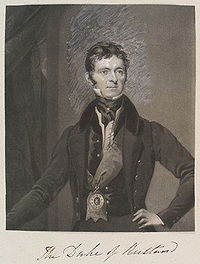 John Manners, 5th Duke of Rutland
John Manners, 5th Duke of Rutland Her Grace was the fifth, but second surviving daughter.of Frederick Karl of Carlisle (Byron's guardian, the 5th Earl of Carlisle), who died Sept. 4, 1825, by Caroline, daughter of Granville-Levison, the first Marquess of Stafford ; was born Nov. 13, 1780. She was married to John-Henry Manners, Duke of Rutland, on the 22d of April 1799, and had issue nine children, of whom three sons and four daughters survive.
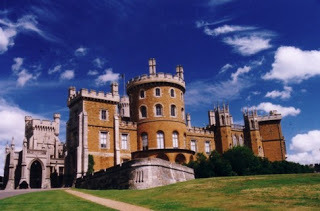
Due to her elevated taste, Belvoir Castle will long remain a magnificent monument. From its first commencement, 25 years ago, in despite of momentary interruption from the calamitous fire in October 1816, until its recent completion, the lamented Duchess had been the presiding Genius of the place, and selected all the plans for its erection; nor were her active and useful exertions restricted to the castle alone. The grounds, the villages, the roads in its vicinity, even the general aspect of the country, were improved through her agency. Every rational suggestion which had for its object the decoration and the embellishment of this beautiful domain, was adopted with eagerness. and zealously carried into effect under her personal and immediate superintendence.
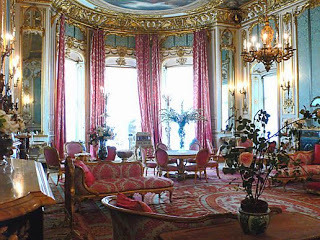
What many individuals would have required a century to execute, her perseverance in a few years achieved; nor was her Grace less successful in the cultivation of the elegant accomplishments of her sex. Her drawings exhibit correct taste. Her poetical genius, hereditary from her noble father the late Earl of Carlisle, and her musical attainments were of the first order. Indefatigable in whatever might promote the general good, and alive to the true interests of her Country, the Duchess was a practical agriculturist. The farm she held, consisting of above 700 acres, visited almost daily by herself, has always been considered a model of scientific management. On several occasions she was complimented with premiums from the Society for the Promotion of Arts and Manufactures, for her extensive plantations and acknowledged improvements in the breeding of cattle.
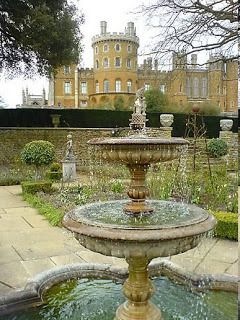
It is striking that with predilections so marked and decided for a rural life, her Grace was one of the brightest ornaments of the English Court, and whenever she graced it with her presence, an object of universal admiration. The ease and dignity of her deportment, her refined and polished address, the graceful condescension of her manners, fascinated every one who came within the sphere of her numerous attractions. Married early to the object of her choice, as a wife, a parent, and a benefactress, she was alike exemplary. To the sorrowing hearts now and for ever bereft of her soothing affection, her tender care, her munificent charily, her death is indeed an irreparable loss!
Dec. 9. The remains of the Duchess of Rutland were deposited in the family vault at Bottesford. Crowds of inhabitants of the vicinity had assembled to pay the last tribute of respect to their esteemed benefactress. Early in the morning the Duke of Rutland arrived at Bottesford, and immediately proceeded to the house of the Rev. Charles Thornton. The procession left Belvoir Castle at ten o'clock, and arrived at Bottesford about one. It was followed by a long train of carriages and other vehicles. The following was the order observed :
Mr. Pound, his Grace's woodman, accompanied by twelve tenants of his Grace, in deep mourning.—The Duchess's Coronet, on a crimson velvet cushion, carried by a gentleman uncovered.—A favourite pony of the late Duchess, enveloped in a black cloth, in the corners of which were embossed her Grace's armorial bearings, led by two of her Grace's oldest servants. —The hearse, drawn by black horses which had belonged to ber Grace, and driven by her Grace's coachman —Five mourning coaches, drawn by six horses each —Her Grace's carriage, drawn by four horses.—W. F. Norton, esq. in his own carriage, accompanied by the Rev. Mr. Salmon.—Two carriages and four.— Forty-six of his Grace's tenants in deep mourning.—Two of the carriages in the procession were occupied by the immediate family—one by the Earl of Carlisle and his brother, and the other by the brothers of his Grace.
The procession, in the first instance, proceeded to the Rectory-yard, Bottesford, where it remained about one hour. The remains of the lamented lady were then taken from the hearse, and carried into the Church by eight Gentlemen. The coffin was covered with a rich pall of black velvet, decorated with her Grace's armorial bearings. His Grace joined the procession at the Rectory. Twenty-six of the noble ancestors and relatives of his Grace lie entombed in the vault, which now also contains the remains of his late amiable Duchess.
Her Grace was not forgotten, as we see in a piece that appeared in Bell's World of Fashion - January 1 1829
. . . entertainments of much splendour and liberality have been given in many a noble mansion; and these have not been bounded within a narrow space, but have extended to the country, as well as occupied the town. Of these, it behoves us particularly to mention the grand file given on the 5th ult. at Belvoir Castle, upon the congratulatory occasion of the birthday anniversary of his Grace of Rutland, its noble and worthy
possessor. The Duke of Wellington, and a very large party of highly distinguished personages, were present.
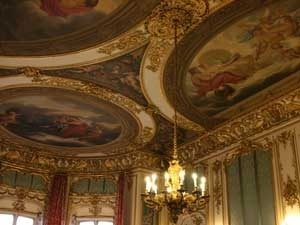
A drawing-room, of truly magnificent dimensions, was for the first time opened; at one end of which stood a full-length statue, executed on the purest white marble (emblem of her stainless character and unsullied virtue!), of the late amiable and greatly regretted Duchess. The ceiling of this rich apartment was divided into sections, in which, cleverly painted, were the portraits of the Duke and late Duchess, the dowager Duchess, and other members of the noble house of Belvoir; also that of the late Duke of York, who was much in the habit of honouring the Castle with his presence, and its excellent possessor with his highest confidence and his purest friendship. This entertainment was the first given by his Grace since the decease of his late ever-to-be-remembered and esteemed Duchess.
Published on November 23, 2010 01:14
November 22, 2010
Fanny Burney and the Emperor of all Maladies
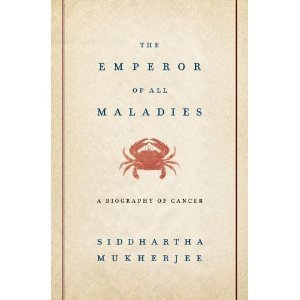
Author and oncologist Siddhartha Mukherjee's debut book charts the history of cancer treatment over the centuries. Amazon said that the book is " . . . . a sweeping epic of obsession, brilliant researchers, dramatic new treatments, euphoric success and tragic failure, and the relentless battle by scientists and patients alike against an equally relentless, wily, and elusive enemy. From the first chemotherapy developed from textile dyes to the possibilities emerging from our understanding of cancer cells, Mukherjee shapes a massive amount of history into a coherent story with a roller-coaster trajectory: the discovery of a new treatment--surgery, radiation, chemotherapy--followed by the notion that if a little is good, more must be better, ending in disfiguring radical mastectomy and multidrug chemo so toxic the treatment ended up being almost worse than the disease."
It is impossible to consider the history of the treatment of cancer without recalling Fanny Burney's harrowing account of the mastectomy she underwent during the Regency period. It is compelling, horrifying and immediate in its very personal nature. We reprint it for you here . . .
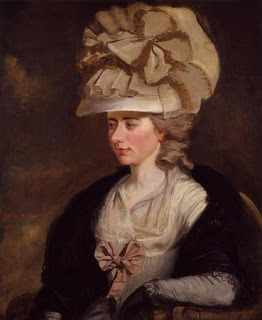
AN AUTOBIOGRAPHICAL ACCOUNT OF MASTECTOMY BY FANNY BURNEY
Fanny Burney (Madame d'Arblay) first felt pain in her breast in August of 1810. Cancer was diagnosed, and Baron Larrey, Napoleon's surgeon, agreed to operate. To spare her suspense, she was given little notice. The "M. d'A." mentioned is her husband and Alexander her son.
*** WARNING: The following mastectomy account may prove disturbing.
30 September 1811: I dressed, aided, as usual for many months, by my maid, my right arm being condemned to total inaction. A letter was delivered to me to acquaint me that at 10 o'clock M. Larry would be with me, properly accompanied, and to exhort me to rely as much upon his sensibility and his prudence, as upon his dexterity and his experience; he charged me to secure the absence of M. d'A: and told me that the young Physician who would deliver me his announcement would prepare for the operation, in which he must lend his aid: and; also that it had been the decision of the consultation to allow me but two hours notice.
Dr. Aumont, the Messenger and terrible Herald, was in waiting; M. d'A stood by my bedside; I affected to be long reading the Note, to gain time for forming some plan, and such was my terror of involving M. d'A in the unavailing wretchedness of witnessing what I must go through, that it conquered every act as if I were directing some third person. The detail would be too Wordy, as James says, but the wholesale is - I called Alex to my Bedside, and sent him to inform M. Barbier Neuville, chef du division du Bureau de M. d'A, that the moment was come, and I entreated him to write a summons upon urgent business for M. d'A and to detain him till all should be over. Speechless and appalled, off went Alex, and, as I have since heard, was forced to sit down and sob in executing his commission. I then, by the maid, sent word to the young Dr. Aumont that I could not be ready till one o'clock: and I finished my breakfast, and- not with much appetite, you will believe! forced down a crust of bread, and hurried off, under various pretenses, M. d'A. He was scarcely gone, when M Du Bois arrived: I renewed my request for one o'clock: the rest came; all were fain to consent to the delay, for I had an apartment to prepare for my banished Mate. This arrangement, and those for myself, occupied me completely. Two engaged nurses were out of the way - I had a bed, Curtains and heaven knows what to prepare - but business was good for my nerves. I was obliged to quit my room to have it put in order: - Dr. Aumount would not leave the house; he remained in the Sallon, folding linen! - He had demanded 4 or 5 old and fine left off under garments - I glided to our Book Cabinet; sundry necessary works and orders filled up my time entirely till One O'clock, When all was ready - but Dr. Moreau then arrived, with news that M. Dubois could not attend till three. Dr. Aumont went away - and the Coast was clear.
This, indeed, was a dreadful interval. I had no longer anything to do - I had only to think - TWO HOURS thus spent seemed never-ending. I would fain have written to my dearest Father - to you, my Esther - to Charlotte James - Charles - Amelia Lock - but my arm prohibited me: I strolled to the Sallon - I saw it fitted with preparations, and I recoiled - But I soon returned; to what effect disguise from myself what I must so soon know? - yet the sight of the immense quantity of bandages, compresses, spunges, Lint - made me a little sick: - I walked backwards and forwards till I quieted all emotion, and became, by degrees, nearly stupid - torpid, without sentiment or consciousness; - and thus I remained till the Clock struck three. I rang for my Maid and Nurses, - but before I could speak to them, my room, without previous message, was entered by 7 Men in black, Dr. Larry, M. Dubois, Dr. Moreau, Dr. Aumont, Dr. Ribe, and a pupil of Dr. Larry, and another of M. Dubois. I was now awakened from my stupor - and by a sort of indignation - Why so many? and without leave? - But I could not utter a syllable. M. Dubois acted as Commander in Chief. Dr. Larry kept out of sight; M. Dubois ordered a Bed stead into the middle of the room. Astonished, I turned to Dr. Larry, who had promised that an Arm Chair would suffice; but he hung his head, and would not look at me. Two old mattrasses M. Dubois then demanded, and an old Sheet. I now began to tremble violently, more with distaste and horror of the preparations even than of the pain. These arranged to his liking, he desired me to mount the Bed stead. I stood suspended, for a moment, whether I should not abruptly escape - I looked at the door, the windows - I felt desperate - but it was only for a moment, my reason then took the command, and my fears and feelings struggled vainly against it. I called to my maid - she was crying, and the two Nurses stood, transfixed, at the door. Let these women all go! cried M. Dubois. This order recovered me my Voice - No, I cried, let them stay! The maid and one of the nurses ran off - I charged the other to approach, and she obeyed. My distress was apparent for M. Dubois himself now softened, and spoke soothingly. Can You, I cried, feel for an operation that, to You, must seem so trivial? Trivial, he repeated - taking up a piece of paper, which he tore, unconsciously, into a million of pieces - he stammered, and could not go on. No one else attempted to speak, but I was softened myself, when I saw even M. Dubois grow agitated, while Dr. Larry kept always aloof, yet a glance showed me he was pale as ashes. I knew not, positively, then, the immediate danger, but every thing convinced me danger was hovering about me, and that this experiment could alone save me from its jaws.
I mounted, therefore, unbidden, the Bead stead - and M. Dubois placed me upon the mattress, and spread a cambric handkerchief upon my face. It was transparent, however, and I saw the Bed surrounded by the 7 Men and my Nurse. I refused to be held; but when, Bright through the cambric, I saw the glitter of polished Steel - I closed my Eyes. A silence the most profound ensued. Again through the cambric, I saw the hand of M. Dubois held up, while his forefinger first described a straight line from top to bottom of the breast, secondly a Cross, and thirdly a Circle; intimating that the WHOLE was to be taken off. Excited by this idea, I started up, threw off my veil, and I held my hand under it, and explained the nature of my sufferings, which all sprang from one point, though they darted into every part. I was heard attentively, but in utter silence, and M. Dubois then replaced me as before, and, as before, spread my veil over my face.
My dearest Esther, - and all my dears to whom she communicates this doleful ditty, will rejoice to hear that this resolution once taken, was firmly adhered to, in defiance of a terror that surpasses all description, and the most torturing pain. Yet - when the dreadful steel was plunged into the breast I needed no injunctions not to restrain my cries. I began a scream that lasted unintermittingly during the whole time of the incision - and I almost marvel that it rings not in my Ears still! so excruciating the agony. When the wound was made, and the instrument was withdrawn, the pain seemed undiminished, for the air that suddenly rushed into those delicate parts felt like a mass of minute but sharp and forked poniards. When I felt the instrument cutting against the grain, while the flesh resisted in a manner so forcible as to oppose and tire the hand of the operator, who was forced to change from the right to the left - then, indeed, I thought I must have expired. I attempted no more to open my Eyes, - they felt as if hermettically shut, and so firmly closed, that the Eyelids seemed indented into the Cheeks. The instrument this second time withdrawn, I concluded the operation over - Oh no! presently the terrible cutting was renewed - and worse than ever, to separate the bottom, the foundation of this dreadful gland from the parts to which it adhered - Again all description would be baffled - yet again all was not over, - Dr. Larry rested but his own hand, and - Oh Heaven! - I then felt the Knife rackling against the breast bone - scraping it! - This performed, while I yet remained in utterly speechless torture, I heard the Voice of Mr. Larry, - (all others guarded a dead silence) in a tone nearly tragic, desire everyone present to pronounce if anything more remained to be done; The general voice was Yes, - but the finger of Mr. Dubois - which I literally felt elevated over the wound, though I saw nothing, and though he touched nothing, pointed to some further requisition - and again began the scraping!
My dearest Esther, not for days, not for Weeks, but for Months I could not speak of this terrible business without nearly again going through it! I was sick, disordered by a single question - even now, 9 months after it is over, I have a headache going on with the account! To conclude, the evil was so profound, the case so delicate, and the precautions necessary for preventing a return so numerous, that the operation, including the treatment and the dressing, lasted 20 minutes! a time, for sufferings so acute, that was hardly supportable - However, I bore it with all the courage I could exert, and never moved, nor stopt them, nor resisted, nor spoke. Twice I believe I fainted; at least, I have two total chasms in my memory of this transaction, that impede my tying together what passed. When all was done, and they lifted me up that I might be put to bed, my strength was so totally annihilated, that I was obliged to be carried, and could not even sustain my hands and arms, which hung as if I had been lifeless: while my face, as the Nurse has told me, was utterly colourless. This removal made me open my Eyes - and I then saw my good Dr. Larry, pale nearly as myself, his face streaked with blood, and its expression depicting grief, apprehension, and almost horror.
* * * * * *
Fanny was born 1752, the daughter of a physician. She lead a unique life and, thankfully, documented her experiences at court and amongst the highest society in her diaries. Passages from these are cited in many works on the Georgian and Regency periods, as they contain much minute detail not found elsewhere. In 1786, Fanny was appointed Second Keeper of the Wardrobe to Her Majesty Queen Charlotte. Her father, upon being introduced to the Prince Regent, spent time discussing music with him. In addition to her social duties, Fanny was a novelist, whose works, including "Cecilia" and "Evelina" were favorites of Jane Austen's. The operation related above, whilst horrific, was obviously a success, as Fanny lived until 1840.
Suggestions for further reading:
Burney, Fanny, Diary and Letters (18c), ed. C. Barrett, 1905
-------The Early Journals and Letters, vol. 1, Univ of Toronto Press 1989 ISBN# 0-7735-0538-5
Chaplin, Arnold, Medicine in England During the Reign of George III, AMS Press ISBN 0-404-13244-8
Loudon, Irvine, Medical Care and the General Practitioner 1750- 1850, Oxford 1986

Published on November 22, 2010 01:41
November 21, 2010
JASNA in Portland OR, Part Two
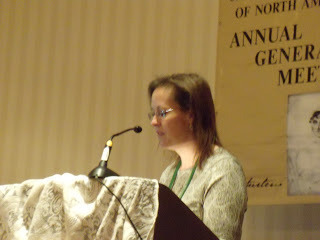 Victoria here with a short post on the break-out session I co-presented on Friday, October 29, 2010, at the JASNA AGM in Portland, OR. Kim Wilson, author of Tea with Jane Austen and In the Garden with Jane Austen, (right) and I spoke on "About Those Abbeys: In fact, literature and landscape."
Victoria here with a short post on the break-out session I co-presented on Friday, October 29, 2010, at the JASNA AGM in Portland, OR. Kim Wilson, author of Tea with Jane Austen and In the Garden with Jane Austen, (right) and I spoke on "About Those Abbeys: In fact, literature and landscape."
 Starting with a brief history of monasticism in England and the dissolution of the monasteries under Henry VIII, we then focussed on what happend to the former abbey buildings and why they were considered so spooky -- and/or picturesque.
Starting with a brief history of monasticism in England and the dissolution of the monasteries under Henry VIII, we then focussed on what happend to the former abbey buildings and why they were considered so spooky -- and/or picturesque. 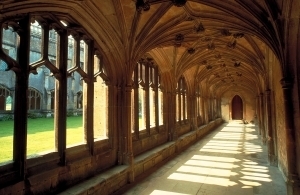
When the abbeys and priories were closed, their land (about one-fourth of all of the nation's arable land -- the REAL reason Henry seized them) was sold and most of the buildings adapted for other uses or semi-destroyed. At right, Lacock Abbey, converted into a stately home and now run by the National Trust.
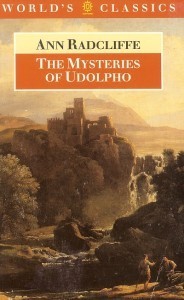 Ruined abbeys, castles and wild landscapes appealed to the writers of gothic fiction, so popular in the late 18th and early 19th centuries. Mrs. Radcliffe's Mysteries of Udolpho is the novel Jane Austen parodied in Northanger Abbey. Terrible secrets are hidden in the ruins, dangerous forces threaten the innocent heroine, but all comes to a happy ending when she is rescued by a worthy hero. Such stories were all the rage in JA's day and many were set among the imagined clanking chains, ghostly moans and dark passages of ruined abbeys.
Ruined abbeys, castles and wild landscapes appealed to the writers of gothic fiction, so popular in the late 18th and early 19th centuries. Mrs. Radcliffe's Mysteries of Udolpho is the novel Jane Austen parodied in Northanger Abbey. Terrible secrets are hidden in the ruins, dangerous forces threaten the innocent heroine, but all comes to a happy ending when she is rescued by a worthy hero. Such stories were all the rage in JA's day and many were set among the imagined clanking chains, ghostly moans and dark passages of ruined abbeys.
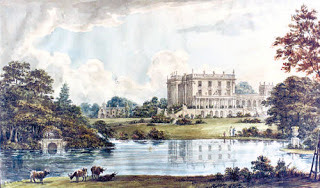 Stoneleigh Abbey, an estate inherited by Jane Austen's relatives, was built on the property of an ancient abbey, and landscaped in the early 19th century by Humphrey Repton. Jane Austen visited here and mentions Repton's schemes for landscapes in her novels.
Stoneleigh Abbey, an estate inherited by Jane Austen's relatives, was built on the property of an ancient abbey, and landscaped in the early 19th century by Humphrey Repton. Jane Austen visited here and mentions Repton's schemes for landscapes in her novels.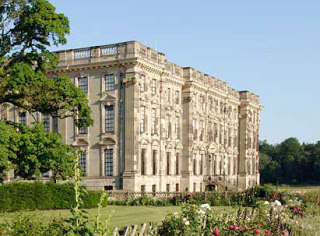 Stoneleigh is open to the public today and part of the tea shop is located in the old abbey undercroft.
Stoneleigh is open to the public today and part of the tea shop is located in the old abbey undercroft. 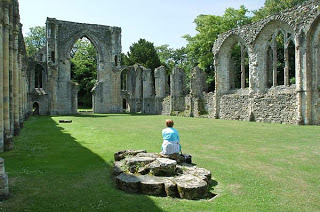 We know that Jane Austen visited Netley Abbey in Hampshire while she was living in Southampton. It was a popular venue for picnics and walks, as were so many of the abbey ruins spread over the entire British Isles. One of the most famous, below, is Tintern Abbey, maybe best known from the paintings of Turner.
We know that Jane Austen visited Netley Abbey in Hampshire while she was living in Southampton. It was a popular venue for picnics and walks, as were so many of the abbey ruins spread over the entire British Isles. One of the most famous, below, is Tintern Abbey, maybe best known from the paintings of Turner.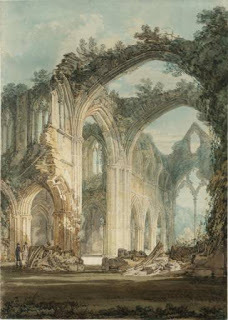
More reports from Portland coming soon.
Published on November 21, 2010 02:30
November 20, 2010
Christmas Shopping in England - Part Two
Still can't decide on the perfect Anglophile Christmas gift? The gift of a subscription keeps giving throughout the year. Each time an issue arrives, your recipient will think of you. And the ease of giving a subscription may put an end to your shopping dilemna and some Fa-La-La-La back in your holiday outlook.

Britain Magazine
$29.95 for 6 issues per year
Learn more about our kings and queens, the heroes and villains, soldiers and statesmen who made our nation great. Join us as we visit castles and cathedrals, stately homes and gardens. Journey with us to proud cities and secret villages, rugged coastline and lush countryside. Listen in while we talk to dukes and designers, artists and actors, courtiers and craftsmen. Each issue is packed with features that showcase the many beauties of BRITAIN, as well as suggestions about where to go, where to stay and what to see.

British Heritage Magazine
6 issues $21.95 per year
British Heritage magazine is the preferred choice to learn more of travel and life in England, Scotland and Wales, written for those who love Britain. This is a must-read for serious Anglophiles who want to know their way around Britain's history and landscapes. Subscriptions make excellent gifts for anyone interested in travel and history of England.

Country Life Magazine
$340 for 52 issues
The quintessential companion to countryside living. A weekly Country Life subscription will ensure that you can always enjoy the magnificent country properties across the United Kingdom - those for sale and those just to admire. You'll see gardens that will make you green with envy, along with tips for your own. You'll discover the topical issues affecting the countryside, and spend time appreciating the arts, antiques, field sports and the wonders of our wildlife.

BBC History Magazine
$75 for 12 issues
Each issue is filled with articles on British history through the centuries, with features on architecture, the military, famous and little known people throughout history, recent historical finds, books and films.

The English Home
$32.75 for 6 Issues
The English Home magazine bills itself as Celebrating the Essence of English Style. It's so much more than a style or decorating magazine. Each issue, you'll meet the owners of period homes and learn the stories behind their search for the perfect property, the renovation process, their hunt for furnishings and their trials and tribulations with building departments, contractors and English Heritage, who holds sway over renovation decisions involving Grade I, II and III listed properties.
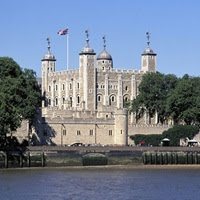
Visit Britain
Do you know someone who's going to Britain this coming year? You can buy them tickets ahead of time on the VB website for London and UK attractions, as well as pre-purchase London TravelCards and BritRail Passes.
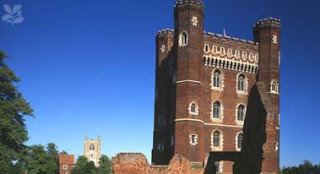
The National Trust
If your gift recipient lives outside the UK or is planning a holiday there, you can buy them a National Trust Touring Pass in advance. It will give them unlimited access to the houses, gardens and special places in the Trust's care and provide free entry for 7 or 14 days. The passes are available in three formats: Admit One, Admit Two or a special National Trust Family Pass. You will also receive a free Great Ideas Guide and Map Guide to help them make the most of using the pass during their visit.

Britain Magazine
$29.95 for 6 issues per year
Learn more about our kings and queens, the heroes and villains, soldiers and statesmen who made our nation great. Join us as we visit castles and cathedrals, stately homes and gardens. Journey with us to proud cities and secret villages, rugged coastline and lush countryside. Listen in while we talk to dukes and designers, artists and actors, courtiers and craftsmen. Each issue is packed with features that showcase the many beauties of BRITAIN, as well as suggestions about where to go, where to stay and what to see.

British Heritage Magazine
6 issues $21.95 per year
British Heritage magazine is the preferred choice to learn more of travel and life in England, Scotland and Wales, written for those who love Britain. This is a must-read for serious Anglophiles who want to know their way around Britain's history and landscapes. Subscriptions make excellent gifts for anyone interested in travel and history of England.

Country Life Magazine
$340 for 52 issues
The quintessential companion to countryside living. A weekly Country Life subscription will ensure that you can always enjoy the magnificent country properties across the United Kingdom - those for sale and those just to admire. You'll see gardens that will make you green with envy, along with tips for your own. You'll discover the topical issues affecting the countryside, and spend time appreciating the arts, antiques, field sports and the wonders of our wildlife.

BBC History Magazine
$75 for 12 issues
Each issue is filled with articles on British history through the centuries, with features on architecture, the military, famous and little known people throughout history, recent historical finds, books and films.

The English Home
$32.75 for 6 Issues
The English Home magazine bills itself as Celebrating the Essence of English Style. It's so much more than a style or decorating magazine. Each issue, you'll meet the owners of period homes and learn the stories behind their search for the perfect property, the renovation process, their hunt for furnishings and their trials and tribulations with building departments, contractors and English Heritage, who holds sway over renovation decisions involving Grade I, II and III listed properties.

Visit Britain
Do you know someone who's going to Britain this coming year? You can buy them tickets ahead of time on the VB website for London and UK attractions, as well as pre-purchase London TravelCards and BritRail Passes.

The National Trust
If your gift recipient lives outside the UK or is planning a holiday there, you can buy them a National Trust Touring Pass in advance. It will give them unlimited access to the houses, gardens and special places in the Trust's care and provide free entry for 7 or 14 days. The passes are available in three formats: Admit One, Admit Two or a special National Trust Family Pass. You will also receive a free Great Ideas Guide and Map Guide to help them make the most of using the pass during their visit.
Published on November 20, 2010 02:04
November 19, 2010
Meet Benedict Cumberbatch

In a perfect world, thirty-four year old, London born actor Benedict Cumberbatch would be lauded simply for using his real name professionally - he is the son of actors Timothy Carlton (birth name Timothy Carlton Cumberbatch) and Wanda Ventham. As this has not yet happened, it's a good thing that Cumberbatch has instead been receiving accolades for his acting talents.
Cumberbatch was educated first at Brambletye School in West Sussex, and then at the prestigious Harrow School in northwest London, where he began performing as an actor. After graduation, he took a gap year to teach English in a Tibetan monastery. He then attended the University of Manchester, where he studied drama. At the university, he met his longtime girlfriend, actress Olivia Poulet. After graduating, Cumberbatch trained further in acting at the London Academy of Music and Dramatic Art.
Cumberbatch told an interviewer that his parents had "worked incredibly hard to give me a very privileged education, so I could do anything but be as stupid as them and become an actor. Unfortunately, I didn't pay any notice, like a lot of children, to my parents' wise words. For awhile, I did toy with being a criminal barrister. I thought that would be quite fun. Then an awful lot of people dissuaded me from that path, basically saying, `It's unpredictable. You don't know where your next job is coming from. You have to travel up and down the country to God-forsaken holes of depravity, and it's very lowly, incredibly hard work.' I thought, "This sounds a bit like acting, so I'll stick with that."
Cumberbatch began his career on the stage, appearing in, amongst other things, Hedda Gabler at the Almeida Theatre in 2005. His performance as Tesman brought him an Olivier Award nomination for Best Performance in a Supporting Role. A year earlier, Cumberbatch had garnered a BAFTA TV Award nomination for Best Actor for his role as Stephen Hawking in Hawking.

That same year, whilst filimig To The Ends of the Earth, Cumberbatch, along with co-stars Denise Black and Theo Landey, were carjacked in South Africa when they were stopped at the side of the road with a flat tyre. Six men appeared, held the trio up against the car and tied their hands with their own shoelaces. During the car-jacking, which lasted two and a half hours, Cumberbatch was held in the boot of the car.
In 2006, Cumberbatch played William Pitt in Amazing Grace, the film is the story of William Wilberforce's intense and lengthy political fight in the late 18th century to eliminate slave trade in the British Empire. The role earned Cumberbatch a nomination for the London Film Critics Circle British Breakthrough Acting Award.
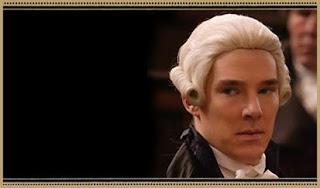
Cumberbatch subsequently appeared in major roles in Atonement (2007) and The Other Boleyn Girl (2008). In 2009, he appeared in Darwin bio-pic Creation, as Darwin's friend Joseph Hooker.And he's succeeded - he is scheduled to appear in The Whistleblower (2010) and Steven Spielberg's War Horse (2011). Cumberbatch will also play Peter Guillam in the 2012 adaptation of the John le Carré novel Tinker, Tailor, Soldier, Spy, directed by Tomas Alfredson, also starring Gary Oldman, Colin Firth and Tom Hardy. This past February, Cumberbatch returned to the stage in Oscar-winning director Danny Boyle's version of Frankenstein, in which Cumberbatch and Jonny Lee Miller swapped the roles of monster and doctor on alternate nights.
Speaking to the Guardian about his roles, Cumberbatch said that people think "I just play neurotic, fey people who would have died with a cold compress to their head. But I do work on the variety. I do try."

For now, we'll watch Cumberbatch in PBS' Masterpiece Mystery! as Sir Arthur Conan Doyle's classic detective Sherlock Holmes. Speaking about the role, Cumberbatch said: "It is the most-played literary, fictional character. It's in the Guinness Book of World Records for it. I follow in the footsteps of about 230-odd people, in many different languages, at different ages and different times. For any actor to play an iconic character, there's a huge pressure that's associated with delivering something that everyone knows culturally, especially in our country. So, it was quite nerve-wracking, but there is an element of a blank canvas because of this brilliant re-invention and re-invigoration of him being a 21st century hero. While it maintains the integrity of Conan Doyle's original, much to the enjoyment of die-hard fans of the books, hopefully it will turn new people onto the books, which will be a good thing."
So what's next? Cumberbatch and his girlfriend, actress Olivia Poulet, would like to have children one day. And Cumberbatch would eventually like to find the time to try his hand at writing. In the meantime, his legions of fans are content to watch, instead of read, him. Check out the ultimate Benedict Cumberbatch fan site here - btw, his female fans have tagged themselves "Cumberbitches."
Published on November 19, 2010 01:49
November 18, 2010
At the JASNA AGM, Portland OR, October 2010

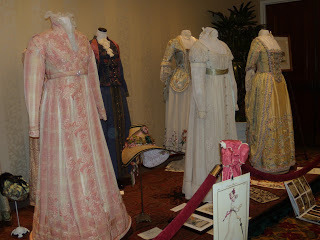 It was an exhilarating experience to be with 600+ Jane Austen fans in Portland OR from October 27-31, 2010, for the yearly AGM on the topic of "Jane Austen and the Abbey: Mystery, Mayhem and Muslin." At right, a collection of costumes on exhibit in the Milsom Street Emporium. Frankly, I was much more interested in all the books on sale -- but I tried to be judicious in my choices.
It was an exhilarating experience to be with 600+ Jane Austen fans in Portland OR from October 27-31, 2010, for the yearly AGM on the topic of "Jane Austen and the Abbey: Mystery, Mayhem and Muslin." At right, a collection of costumes on exhibit in the Milsom Street Emporium. Frankly, I was much more interested in all the books on sale -- but I tried to be judicious in my choices.
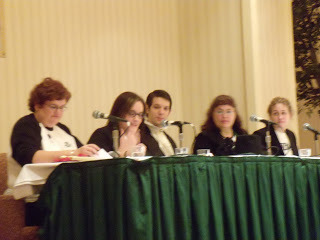 Team Tilney A pre-conference offering was the presentation:
Team Tilney A pre-conference offering was the presentation:"Team Tilney Explains It All," a light-hearted look at the (beloved) hero (center) of Northanger Abbey.
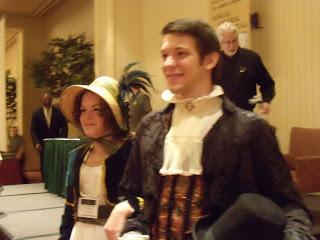 Our hero Team TilneyL l-r, Margaret Sullivan, Kelly Brown, Henry Tilney, Heather Laurence, Lynn Marie Macy.
Our hero Team TilneyL l-r, Margaret Sullivan, Kelly Brown, Henry Tilney, Heather Laurence, Lynn Marie Macy. 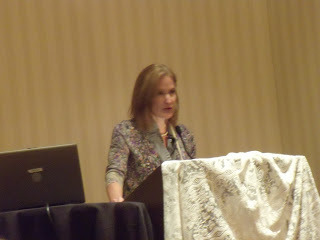 Stephanie BarronOn Friday afternoon, the AGM officially opened with a talk by Stephanie Barron, author of the Jane Austen mystery series. She analyzed Northanger Abbey as a mystery plot by which Catherine and Henry learn about each other and grow toward a lasting relationship, a very clever take on the novel.
Stephanie BarronOn Friday afternoon, the AGM officially opened with a talk by Stephanie Barron, author of the Jane Austen mystery series. She analyzed Northanger Abbey as a mystery plot by which Catherine and Henry learn about each other and grow toward a lasting relationship, a very clever take on the novel. 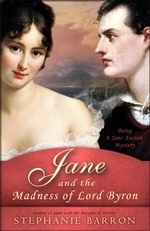
Ms. Barron has a new book, Jane and the Madness of Lord Byron, which promises to be another fascinating read for those of us who love her imaginative style. She said she combs through Austen's letters for kernels of information she turns into her stories.
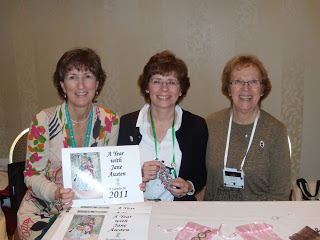 In between sessions, our colleagues in the Wisconsin chapter of JASNA sold our wonderful 2011 calendars. Here, l-r, Area coordinator Liz Cooper, Susan Richard and Yolanda Jensen stand by to make the sales. If you are interested in all the dates in Jane's life and in her novels, they are here! For more information, click here and click again on Merchandise.
In between sessions, our colleagues in the Wisconsin chapter of JASNA sold our wonderful 2011 calendars. Here, l-r, Area coordinator Liz Cooper, Susan Richard and Yolanda Jensen stand by to make the sales. If you are interested in all the dates in Jane's life and in her novels, they are here! For more information, click here and click again on Merchandise.
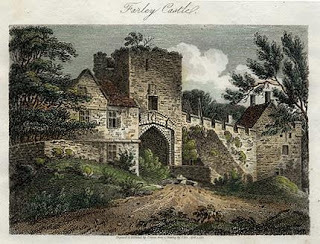 Farleigh Hungerford Castle
Farleigh Hungerford Castle
 Janine Barchas of the University of Texas, Austin, spoke on Bluebeard's Castle. She suggested that Jane Austen had probably visited the ruins of Farley Hungerford Castle near Bath. A period guide to Bath and its environs was owned by the Austens and contained information the castle and its bloody history, which could well have been one of JA's inspiratons for Catherine's suspicions of mayhem at Northanger Abbey.
Janine Barchas of the University of Texas, Austin, spoke on Bluebeard's Castle. She suggested that Jane Austen had probably visited the ruins of Farley Hungerford Castle near Bath. A period guide to Bath and its environs was owned by the Austens and contained information the castle and its bloody history, which could well have been one of JA's inspiratons for Catherine's suspicions of mayhem at Northanger Abbey.
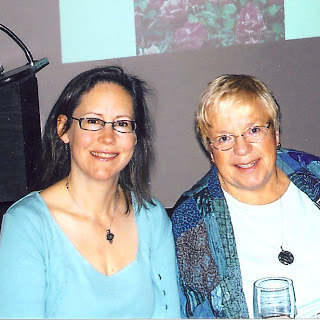 The next break out I attended was --MINE! Kim Wilson, left, author of Tea with Jane Austen and Jane Austen in the Garden, and I presented "About Those Abbeys...in Fact, Fiction and Landscape." I will post about our talk soon. This is a picture of Kim and me at a previous event. I was too busy with our power point to take photos.
The next break out I attended was --MINE! Kim Wilson, left, author of Tea with Jane Austen and Jane Austen in the Garden, and I presented "About Those Abbeys...in Fact, Fiction and Landscape." I will post about our talk soon. This is a picture of Kim and me at a previous event. I was too busy with our power point to take photos.
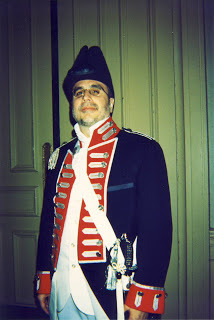 The evening presentation was by popular speaker Jeff Nigro, Area Coordinator for the Greater Chicago Chapter of JASNA. His topic was "Mystery Meets Muslin: Regency Gothic Dress in Art, Fashion and the Theatre." As always, Jeff (a Chicago Art Institute staffer) was knowledgable and charming. I show him at right in his modeling debut from the Philadelphia AGM in 2009 (because I forgot my camera at his talk this year.)
The evening presentation was by popular speaker Jeff Nigro, Area Coordinator for the Greater Chicago Chapter of JASNA. His topic was "Mystery Meets Muslin: Regency Gothic Dress in Art, Fashion and the Theatre." As always, Jeff (a Chicago Art Institute staffer) was knowledgable and charming. I show him at right in his modeling debut from the Philadelphia AGM in 2009 (because I forgot my camera at his talk this year.) 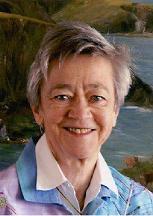 The next morning, Saturday, we prepared for a busy day. Juliet McMaster gave the opening plenary talk on "A Surmise of Such Horror: Catherine Morland's Imagination." As with Jeff's talk, the audience was charmed, amused and illuminated by Juliet. She is a leading Austen scholar, as well as an artist and playwright. She and Jeff exhibit the best of what AGM's provide: worthwhile talks that also entertain. Just like Jane Austen's novels.
The next morning, Saturday, we prepared for a busy day. Juliet McMaster gave the opening plenary talk on "A Surmise of Such Horror: Catherine Morland's Imagination." As with Jeff's talk, the audience was charmed, amused and illuminated by Juliet. She is a leading Austen scholar, as well as an artist and playwright. She and Jeff exhibit the best of what AGM's provide: worthwhile talks that also entertain. Just like Jane Austen's novels.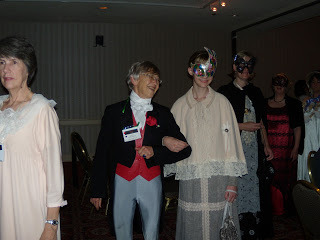 Dr. McMaster pointed out how Henry Tilney relished Catherine's freshness. The naive Catherine, who has lost herself in gothic novels, is susceptible to Henry's teasing about the horrors awaiting her at Northanger Abbey. But after he catches her snooping and realizes she actually believes she will find evidence of terrible crimes committed there, he chastizes her. And with his gentle teaching, she grows to appreciate realy natural beauty and truth, gains confidence in her instincts and grows into the kind of woman he can not only admire and tease but love. This is a very rough approximation of Dr. McMaster's theses, but it will have to do, I'm afraid. Above and right is Dr. McMaster in the center, with admiring throngs.
Dr. McMaster pointed out how Henry Tilney relished Catherine's freshness. The naive Catherine, who has lost herself in gothic novels, is susceptible to Henry's teasing about the horrors awaiting her at Northanger Abbey. But after he catches her snooping and realizes she actually believes she will find evidence of terrible crimes committed there, he chastizes her. And with his gentle teaching, she grows to appreciate realy natural beauty and truth, gains confidence in her instincts and grows into the kind of woman he can not only admire and tease but love. This is a very rough approximation of Dr. McMaster's theses, but it will have to do, I'm afraid. Above and right is Dr. McMaster in the center, with admiring throngs.I fear I have run out of space, so I will conclude now, and report on other AGM events in Parts Two, Three, and Four upcoming.
Published on November 18, 2010 02:25
November 17, 2010
A Camel's Sad Tale
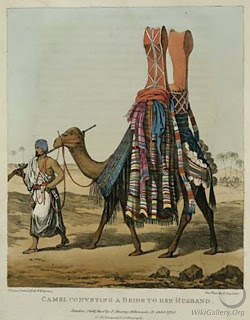
Camel Conveying a Bride to Her Husband by Captain Lyon
From Sophy Bagot's Journal, published in Links with the Past (1901)
1829.—Captain (George Francis) Lyon, on his return from his African travels, obtained a white dromedary of extraordinary beauty, and from its colour, which is very uncommon, it was very valuable. He was also very spirited, but Captain Lyon treated him kindly and judiciously, and frequently he said he was indebted for his life to that animal's speed and exertions; and his great wish was to present it to the King on his arrival in England. This was done, and the dromedary, in the finest possible order, was placed in the Royal Mews, exact orders having been also transmitted as to how it ought to be treated. Some time afterwards, Captain Lyon went with a party to see his old friend, and was told by the keeper it had become very fierce. Captain L went up to the noble animal, who was holding its head very high, as they do when displeased, but he instantly recognised his master, and without the slightest opposition suffered him to mount. Captain Lyon soon discovered his favourite was nearly starved, and remonstrated strongly and it may be supposed angrily. The next morning he received a note requesting him to remove the dromedary, as his Majesty could not afford to keep it. This order was promptly obeyed, and not without indignation, and the poor animal under kind treatment soon regained its flesh and its temper. The fame of his beauty spread, and the Master of Exeter Change, having seen and greatly admired it, said to Captain Lyon, " You are going abroad, and cannot want this creature, and I will gladly give you 500 pounds for it." " No," said Lyon, " the King cannot afford to keep it; of course, no one else can." After putting his arms round the dromedary's neck and kissing it, he shot it to the heart. It may now be seen stuffed in the British Museum.
You can read more about the interesting life and travels of Captain Lyon here .
Published on November 17, 2010 01:30
November 16, 2010
It's Official!
Published on November 16, 2010 05:31
Kristine Hughes's Blog
- Kristine Hughes's profile
- 6 followers
Kristine Hughes isn't a Goodreads Author
(yet),
but they
do have a blog,
so here are some recent posts imported from
their feed.




